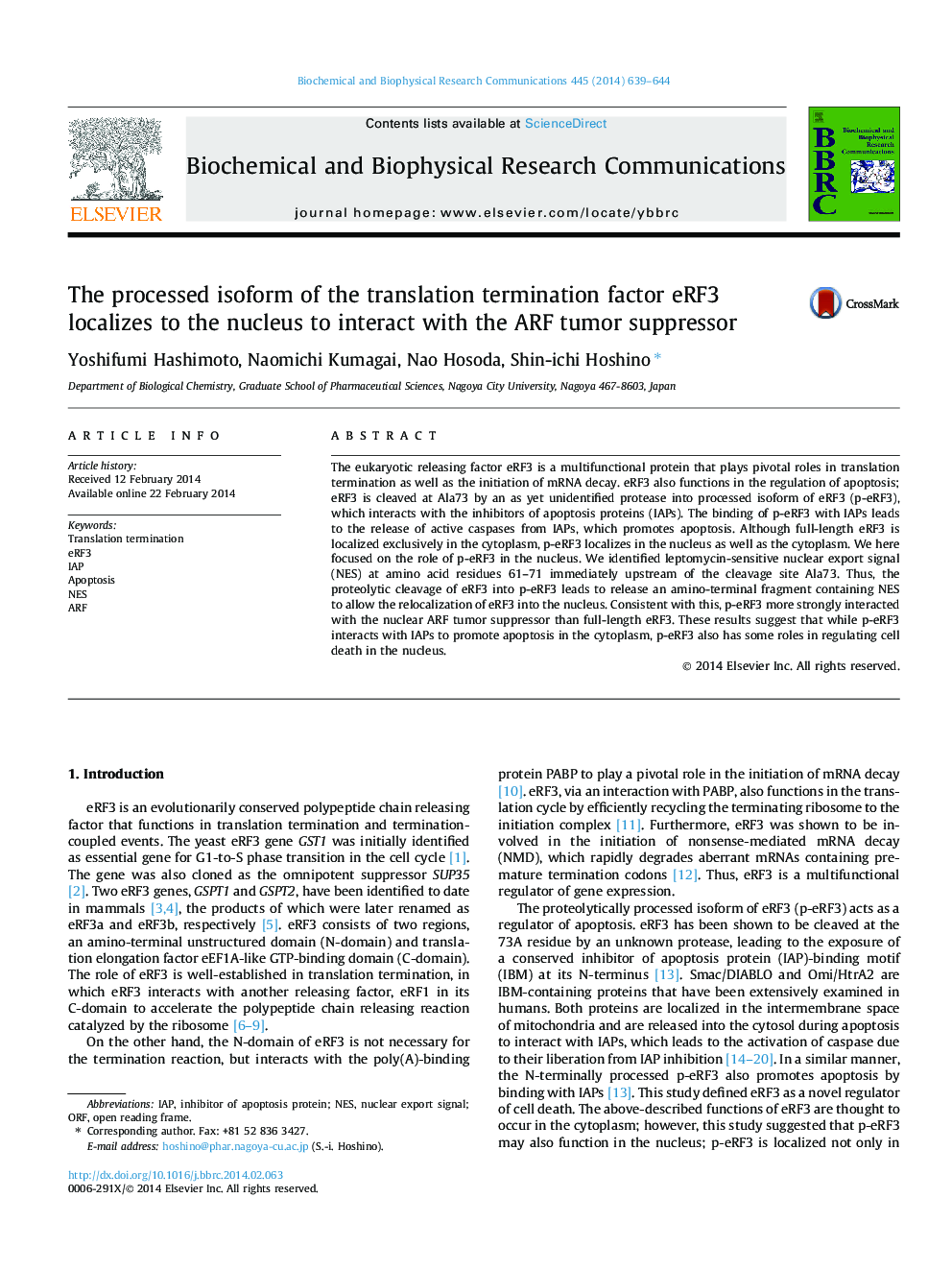| Article ID | Journal | Published Year | Pages | File Type |
|---|---|---|---|---|
| 1928562 | Biochemical and Biophysical Research Communications | 2014 | 6 Pages |
•So far, eRF3 has been thought to function exclusively in the cytoplasm.•eRF3 is a nucleo-cutoplasmic shuttling protein.•eRF3 has a leptomycin-sensitive nuclear export signal (NES).•Removal of NES by proteolytic cleavage allows eRF3 to translocate to the nucleus.•The processed eRF3 (p-eRF3) interacts with a nuclear tumor suppressor ARF.
The eukaryotic releasing factor eRF3 is a multifunctional protein that plays pivotal roles in translation termination as well as the initiation of mRNA decay. eRF3 also functions in the regulation of apoptosis; eRF3 is cleaved at Ala73 by an as yet unidentified protease into processed isoform of eRF3 (p-eRF3), which interacts with the inhibitors of apoptosis proteins (IAPs). The binding of p-eRF3 with IAPs leads to the release of active caspases from IAPs, which promotes apoptosis. Although full-length eRF3 is localized exclusively in the cytoplasm, p-eRF3 localizes in the nucleus as well as the cytoplasm. We here focused on the role of p-eRF3 in the nucleus. We identified leptomycin-sensitive nuclear export signal (NES) at amino acid residues 61–71 immediately upstream of the cleavage site Ala73. Thus, the proteolytic cleavage of eRF3 into p-eRF3 leads to release an amino-terminal fragment containing NES to allow the relocalization of eRF3 into the nucleus. Consistent with this, p-eRF3 more strongly interacted with the nuclear ARF tumor suppressor than full-length eRF3. These results suggest that while p-eRF3 interacts with IAPs to promote apoptosis in the cytoplasm, p-eRF3 also has some roles in regulating cell death in the nucleus.
Graphical abstractFigure optionsDownload full-size imageDownload as PowerPoint slide
